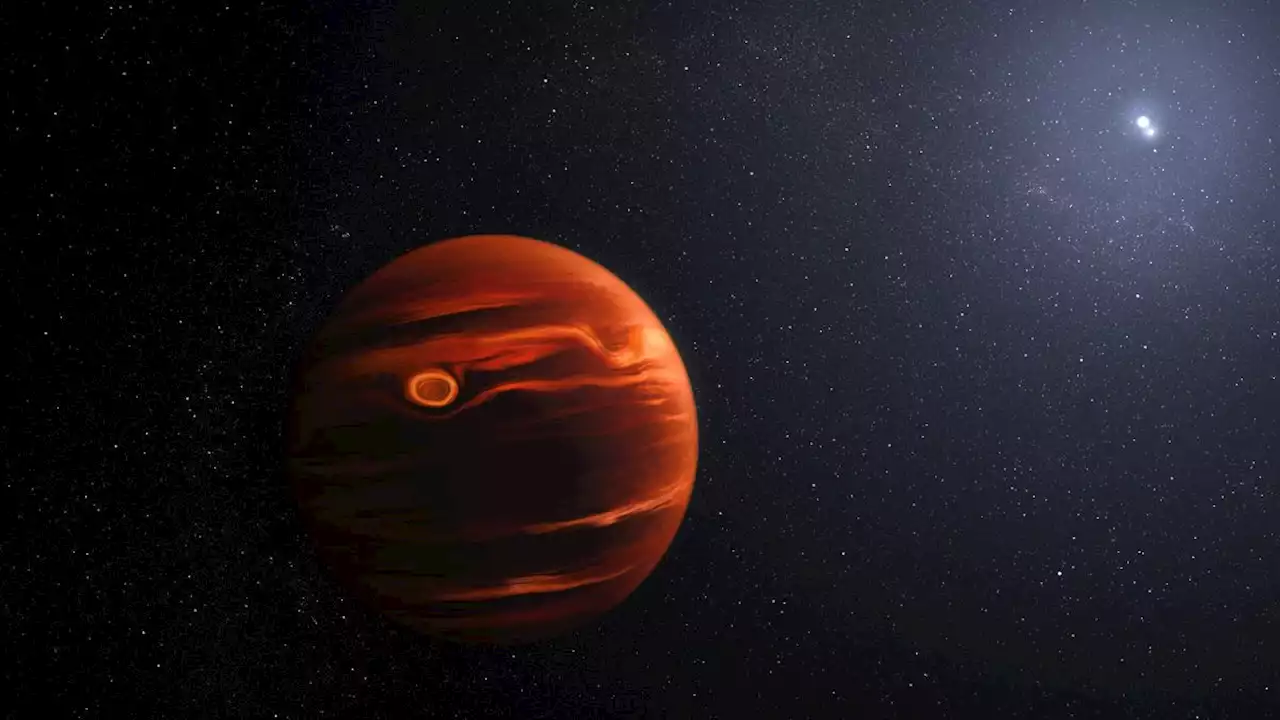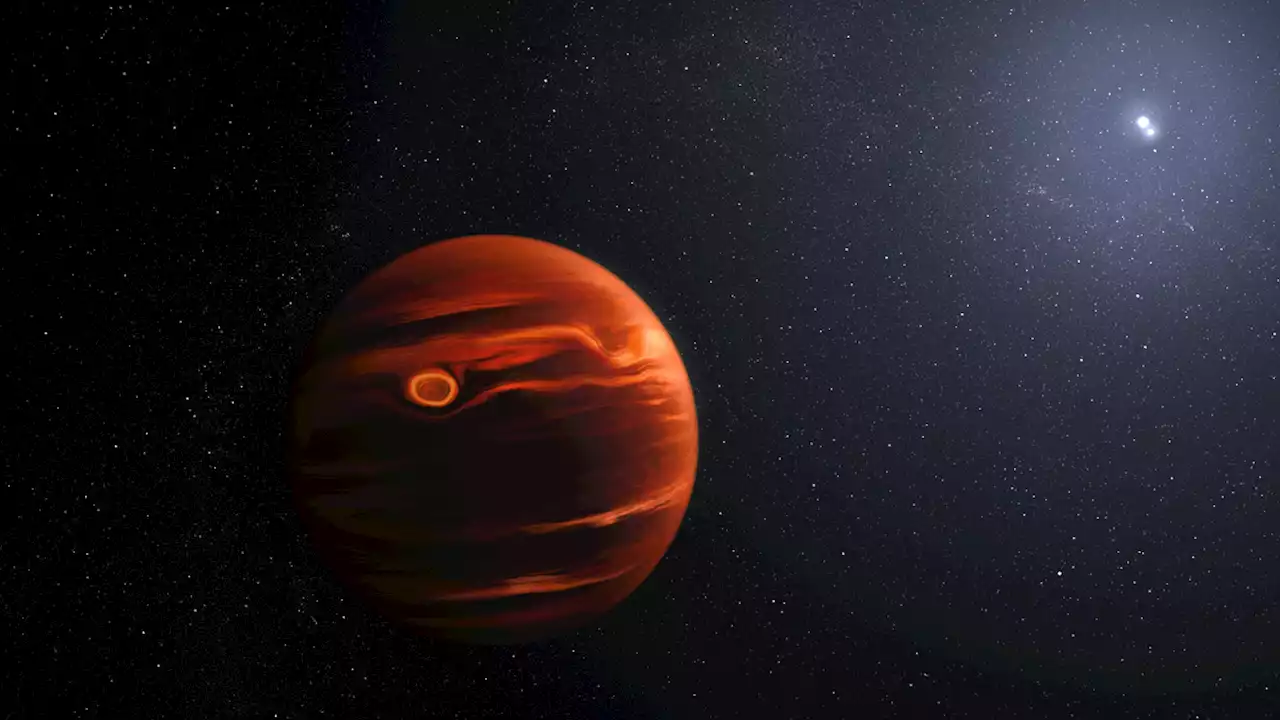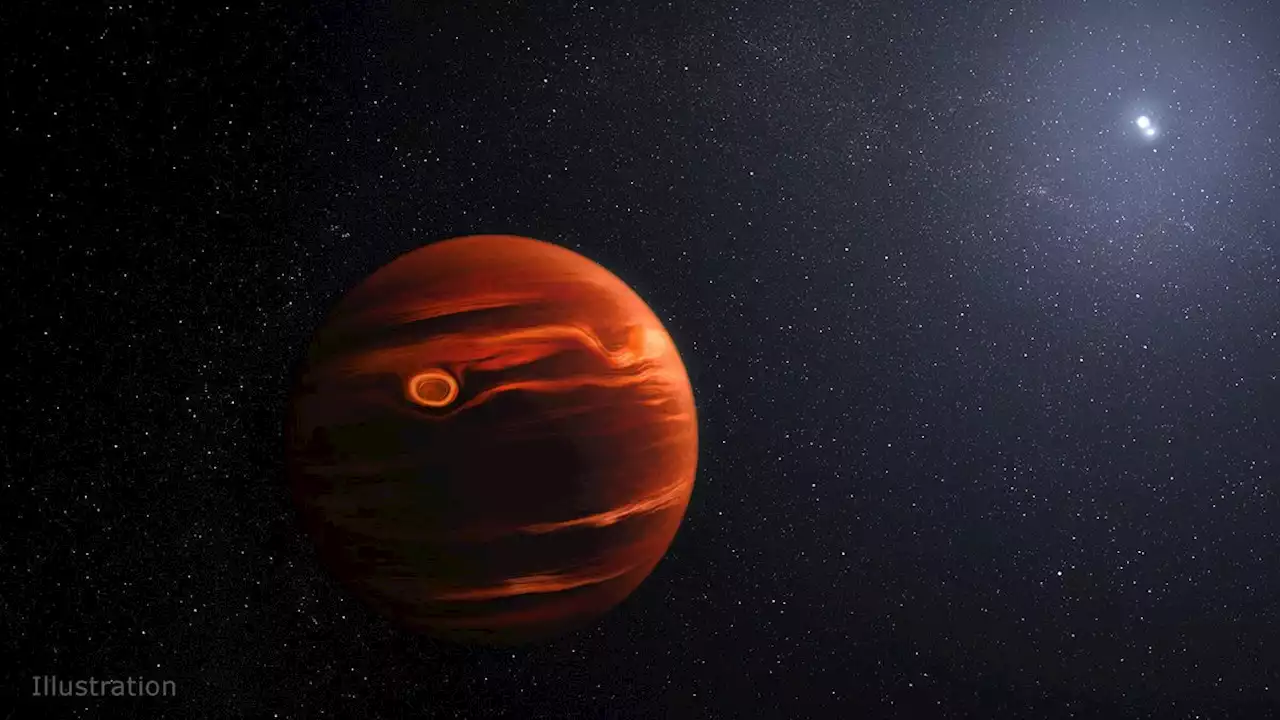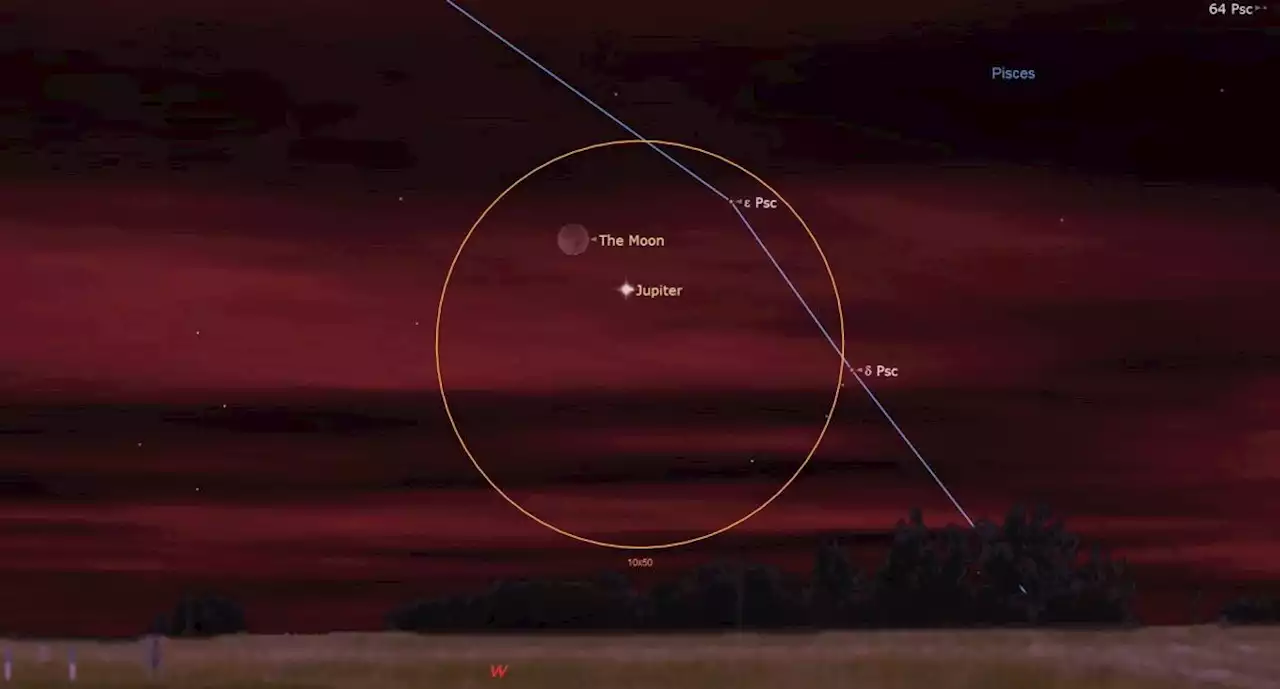This exoplanet is 19 times more massive than Jupiter and is located about 40 light-years away from us.
, the world's most powerful space telescope, has been providing us with breathtaking views of the universe and continues to make astounding discoveries one after the other.
“The finer silicate grains in its atmosphere may be more like tiny particles in smoke. The larger grains might be more like very hot, very small sand particles,” said co-author Beth Biller of the University of Edinburgh in Scotland in aThis distant planet’s atmosphere is “constantly rising, mixing, and moving” throughout the day, which lasts up to 22 hours. Webb found that the temperatures can reach 1,500 degrees Fahrenheit in the atmosphere, where silicate clouds are constantly churning.
The observations also show clear detections of water, methane, and carbon monoxide and evidence of carbon dioxide in the exoplanet's atmosphere. This is the first time the telescope has discovered so many molecules simultaneously.
United States Latest News, United States Headlines
Similar News:You can also read news stories similar to this one that we have collected from other news sources.
 James Webb Telescope spies hot, gritty clouds in skies of huge exoplanet with 2 sunsJames Webb Telescope spies hot, gritty clouds in skies of huge exoplanet
James Webb Telescope spies hot, gritty clouds in skies of huge exoplanet with 2 sunsJames Webb Telescope spies hot, gritty clouds in skies of huge exoplanet
Read more »
 Webb Telescope Spots a Planet With 'Gritty' Clouds Just 40 Light-Years AwayThis world orbits two stars at once and has a 22-hour day.
Webb Telescope Spots a Planet With 'Gritty' Clouds Just 40 Light-Years AwayThis world orbits two stars at once and has a 22-hour day.
Read more »
 NASA’s Webb Spots Swirling, Gritty Clouds on Remote PlanetResearchers observing with NASA’s James Webb Space Telescope have pinpointed silicate cloud features in a distant planet’s atmosphere. The team, led by Brittany Miles of the University of Arizona, also made extraordinarily clear detections of water, methane and carbon monoxide with Webb’s data, and found evidence of carbon dioxide.
NASA’s Webb Spots Swirling, Gritty Clouds on Remote PlanetResearchers observing with NASA’s James Webb Space Telescope have pinpointed silicate cloud features in a distant planet’s atmosphere. The team, led by Brittany Miles of the University of Arizona, also made extraordinarily clear detections of water, methane and carbon monoxide with Webb’s data, and found evidence of carbon dioxide.
Read more »
 Watch Jupiter meet the moon and Mercury this week before leaving the night skyThe solar system's largest planet will meet up with its smallest planet in the night sky.
Watch Jupiter meet the moon and Mercury this week before leaving the night skyThe solar system's largest planet will meet up with its smallest planet in the night sky.
Read more »
 Five planets will align across the night sky near the end of March. Here's how to see themThe planets will align right before the turn of the month on March 28, according to Starwalk.
Five planets will align across the night sky near the end of March. Here's how to see themThe planets will align right before the turn of the month on March 28, according to Starwalk.
Read more »
 See the moon and Jupiter meet in the sky tonight (March 22)The nearly new moon sidles up to the solar system’s largest planet.
See the moon and Jupiter meet in the sky tonight (March 22)The nearly new moon sidles up to the solar system’s largest planet.
Read more »
